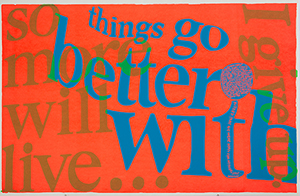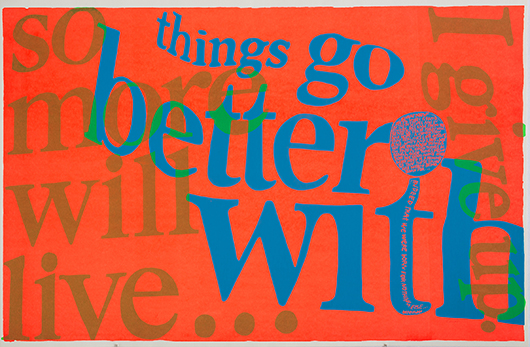
PITTSBURGH – The Andy Warhol Museum announces its latest exhibition, “Someday is Now: The Art of Corita Kent,” opening to the public Jan. 31.
This exhibition is the first full-scale survey covering more than 30 years of work by the American artist Corita Kent (1918–1986). In her rich and varied career, she was a designer, teacher, feminist and activist for civil rights and anti-war causes. Her thousands of posters, murals and signature serigraphs reflect a combined passion for faith and politics. Kent became one of the most popular graphic artists of the 1960s and 1970s, and her images remain iconic symbols that address the larger questions and concerns of that turbulent time.
While several exhibitions have focused on Kent’s work from the 1960s, “Someday is Now” is the first major museum show to survey her entire career, including early abstractions and text pieces as well as the more lyrical works made in the 1970s and 1980s. The exhibition includes rarely shown photographs Kent used for teaching and documentary purposes, as well as hands-on art activities inspired by Kent’s teaching philosophy.
“So many artists have been inspired by Kent’s art, activism, and teaching philosophy, including several artist educators on staff at The Warhol,” says Tresa Varner, curator of education and interpretation at The Warhol. “Her message and belief in the power of art to transform is still relevant today, and it has inspired programming at the museum for years.”
A sister of the Immaculate Heart of Mary, Kent taught in the art department at Immaculate Heart College from 1946 through 1968, where she fostered a creative and collaborative arts community and developed a life-long interest in printmaking. At IHC, she developed her characteristic mixture of bold, bright imagery and provocative texts that she extracted from a range of cultural sources, including advertising slogans, grocery store signage, poetry, scripture, newspapers, magazines, philosophy, theological criticism and song lyrics. Her inventive textual amalgams mix the secular and religious, popular culture and fine art, pain and hope, and include quotes from a range of literary and cultural figures, such as Samuel Beckett, Albert Camus, e.e. cummings, Langston Hughes, John Lennon and Gertrude Stein.
For Kent, printmaking was a populist medium to communicate with the world around her, and her designs were widely disseminated through billboards, book jackets, illustrations, posters, gift cards, and T-shirts. Printmaking allowed Kent to produce a large quantity of original art for those who could not afford to purchase high-priced artworks.
ADDITIONAL IMAGES OF NOTE




